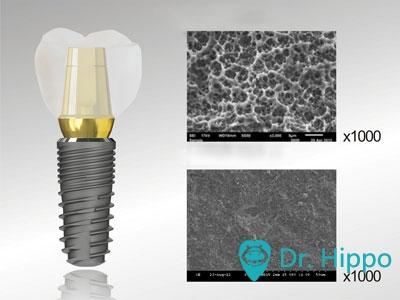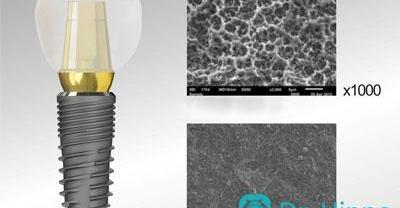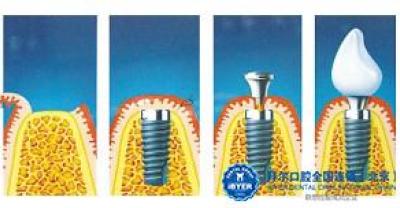The most suitable implant for patients with diabetic osteoporosis
Dental implants have developed rapidly in recent years. The number of dental implant surgeries in the United States has increased more than tenfold and continues to grow. At present, dental implant surgery solves many problems of missing teeth in clinic, such as the occlusion of single jaw complete removable denture and upper and lower jaw natural teeth to the edentulous area, which can avoid grinding teeth because of making dental bridge. it can slow down the loss of the height and thickness of alveolar bone and provide patients with healthier and comfortable masticatory function.
Among the many dental implant operations, minimally invasive dental implant surgery can be performed with minimal wound, fastest speed and least pain, which gives many people who are afraid of dental implants one more choice.
Minimally invasive dental implant surgery is called "non-flap implant" (flapless operation). The pulp above the implant is removed with a circular blade or laser and then implanted. The advantages are small wound, less bleeding and fast tooth implantation. The traditional "flap surgery and tooth implantation" is to cut open the gums with a blade, open the gums and implant them into the artificial roots and then sew them up. Minimally invasive dental implantation is characterized by high accuracy, strong safety, small wound, less bleeding and fast speed.
Some patients who want to use minimally invasive dental implants, such as insufficient gingival bone bed, can not immediately implant teeth, have to go through bone filling, and wait for the bone bed to be suitable before minimally invasive dental implants. Minimally invasive dental implants can be performed only after the oral and physical condition is evaluated by a physician. As far as possible to meet the needs of patients, for patients to perform the most appropriate artificial dental implant surgery is the best. Compared with traditional dental implants, minimally invasive dental implants are highly recommended for the elderly and patients with hyperglycemia and hypertension. Because the surgical incision is very small, the time is short, there is no bleeding, no swelling and pain in the process, and the postoperative recovery is fast.
Usually the longer it takes to cut open the gingival tissue, the more swollen and painful the gums will be. Minimally invasive dental implants can help patients plant full teeth within a day and can chew and eat normally.

Calcium dental implant is the most suitable for patients with diabetic osteoporosis.
Calcium dental implant (Ca dental implant) is a new concept dental implant technique. The tooth is put into calcium solution to maximize its surface activity, so as to improve the initial fixation ability and promote the formation of new bone. Compared with the previous dental implant technique, it can not only shorten the operation time, but also perform the operation even if the gingival bone is weak.
The specially treated calcium dental implant attracts blood to the tooth surface in the human body, so that the protein and bone forming cells around the teeth get the blood supply to the maximum extent, and calcium ions promote the binding of blood proteins and the formation of platelets. it protects the surgical wound in a short time and shortens the treatment time.
The implant is stored in calcium ion water. Compared with previous dental implants, this new method can prevent surface contamination, make bone union faster, and make it acceptable to people who find it difficult to undergo old dental implants, especially those with diabetes and osteoporosis.
- Prev

Not all flowers can be planted indoors!
Not all flowers and plants can be planted indoors, such as the strong fragrance produced when some flowers bloom makes people dizzy and suffocated, some juices are poisonous, some are scattered.
- Next

Implant tooth and porcelain tooth which ache more?
Dental implants and porcelain teeth are now more popular missing teeth repair methods. When a friend chooses a repair method, he asks Xiaobian, which of the two methods hurts more?...
Related
- Fuxing push coffee new agricultural production and marketing class: lack of small-scale processing plants
- Jujube rice field leisure farm deep ploughing Yilan for five years to create a space for organic food and play
- Nongyu Farm-A trial of organic papaya for brave women with advanced technology
- Four points for attention in the prevention and control of diseases and insect pests of edible fungi
- How to add nutrient solution to Edible Fungi
- Is there any good way to control edible fungus mites?
- Open Inoculation Technology of Edible Fungi
- Is there any clever way to use fertilizer for edible fungus in winter?
- What agents are used to kill the pathogens of edible fungi in the mushroom shed?
- Rapid drying of Edible Fungi

